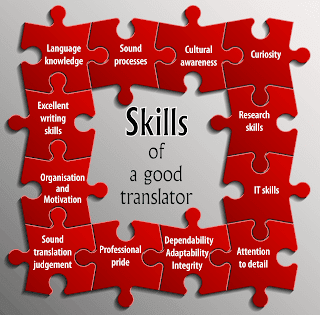5 Multilingual SEO Best Practices to Follow in 2020

Considering several SEO factors is important while setting up a multilingual store. This is because good multilingual SEO helps improve rank of your site higher and overall user experience.
Multilingual SEO is the act of optimizing content on your website for different languages to become searchable in new markets and make your site findable among people from different countries. A Magento 2 Multi-Language extension or any other based on your ecommerce platform can help translate the store.
Note: Though Google Translate can help, translation of your store for non-English speaking countries won’t be accurate and fully practical. Instead, a properly planned multilingual SEO strategy that uses a Magento 2 Language Switcher or any other plugin can give far better results.
There are, however, several tips to ensure proper and effective SEO. So, let’s read on…
Plan out Your Multilingual SEO Strategy
Consider the search habits of your audience from target countries. They might be different from those in your native country. Ensure that you have a solution that translates your content and metadata into your audience’s native languages.
To help translate content more effectively and accommodate the differences, consider:
→ Surfing and using social media to support your on-site SEO.
→ Using backlinks in your target countries and multilingual markets.
→ Using proper content strategy and search terms – adding new content for international audiences.
→ Assessing visitor statistics using Google Analytics to find out which countries your traffic is coming from, calculating the percentage, and comparing it with your target percentage traffic from a particular country.
→ Considering currencies and how products meet the needs of different markets and localizing SEO in case you run an international ecommerce store.
→ Thinking of a good domain name that could be either different in different languages or a unique one recognizable by non-English speakers also.
→ Testing how your search engine results pages look in different categories and in different versions of Google search.
Once you have planned out an effective SEO strategy, follow the common tips given below to optimize your multilingual SEO further.
5 Multilingual SEO Best Practices
1. Use Dedicated URLs
Duplicacy of content is one of the main concerns of a multilingual site. While not all duplicate content is harmful, content that appears within multiple URLs can lead to penalties like lowered rankings or even de-indexing.
To prevent duplicate content penalties, use ‘dedicated URLs’ including a language indicator each, as recommended by Google’s best practices.
The indicator helps search engines and users to identify the language from the URL itself.
For instance, if your original page is http://www.mystore.com, the URL for its French version can be http://www.mystore.com/fr/ where /fr/ is the language indicator.
Again, you can place this language indicator in the URL in three ways as follows.
→ Top level domain (e.g. http://www.mystore.fr)
→ Subdomain (e.g. http://www.fr.mystore.com)
→ Subdirectory (e.g. http://www.mystore.com/fr/)
At times, search engines might interpret even a language indicator as well. Therefore, ensure that your site is SEO-compatible.
Related: 5 Points to Consider Before Translating a Website
2. Apply hreflang Tags and Product Attributes
Besides language indicators, Google also uses hreflang attributes to help determine the language of the page and its target region. As tags are based on the selection of locale as per your store view. So, ensure that you select a proper locale for your store view so you can add an HTML language attribute-based on your locale.
You can insert these tags in the header section of the original page or submit them via a sitemap. For example, an hreflang tag referencing a French page intended for readers in the USA could look like this:
< link rel=”alternate” hreflang=”fr-us” href=”http://mystore.com/fr/” >
If a page has to target multiple regions, you can also add multiple hreflang attributes. However, as the count of target regions goes high, adding attributes becomes more difficult.
Our Magento 2 Language Switcher can help in this way. It helps you keep your product attributes like meta-attributes, meta-description, name, short description, etc. updated.
3. Use Only One Language Per Page
Translating some areas of a page while retaining the primary language in its other parts may be tempting at times. A couple of situations where you can think of this are:
- The main content is translated but the navigation text is in the original language.
- User generated content (like forum discussions and comments) are in different languages.
In both these cases, you can specify the intended language and region by adding the hreflang tags as discussed above.
However, multiple languages on a page could impact the user experience.
→ In the first case, the reader might understand the main content but face trouble navigating to other pages.
→ In the second case, user-generated content in different languages could result in loss of context in discussions and leave the reader confused or frustrated.
Fortunately, with our Magento 2 multi Language, you can translate any CMS page and exercise full control over CMS page fields like meta-details or content.
4. Translate your metadata
Ensure to translate your metadata also besides site content. As it is a valuable piece of text that will help you rank better in your target countries. But its translation is not as easy as translating metadata word for word.
The word that might be a keyword in your site’s primary language (original language) may be different in your translated site. This implies that a new keyword research into your target markets is of vital importance. And you’ll need to do that first!
Keyword explorer tools like Ahrefs or Ubersuggest can help you with that. Enter a translated keyword, select your target country, and review the results to get better insights into what your potential customers might search.
5. Ensure to Keep Site Loading Speed High
As per a Google survey conducted in 2018, the probability of bounce increases by 32% as the page load time goes from 1s to 3s. As your website loading time is one of the key ranking factors for search engines, you can’t afford to lose your website traffic to your competitors due to poor speed. Hence, ensuring to make your website load faster matters a lot.
There are a number of ways you can use to increase the website loading speed significantly.
→ Use a plugin for page caching
→ Set up browser caching
→ Integrate a CDN with your site
→ Optimize the size of images [without losing quality]
Another effective way of making your website load faster is choosing the right hosting plan. Generally, in cheaper hosting plans, your website shares server resources with multiple other websites which results in slower loading. If your budget allows, go for the hosting plans that offer dedicated servers for your site.
Conclusion
Considering the best SEO practices while creating a multilingual site can go a long way towards engaging your customers and building your brand image in the international market. Our Magento 2 Multi Language Extension can help you translate your store into multiple languages and achieve business growth.
To know more about its features or integrate, contact us at sales@appjetty.com and our sales team will get in touch with you within 24 hours.
Original Blog : https://www.appjetty.com/blog/multilingual-seo-best-practices/


Comments
Post a Comment